Ever find yourself engaged in a tug of war with an elusive catch while fishing in serene ponds or vast lakes? It’s a familiar scenario for many of us. Especially when we yearn to bag the mighty largemouth bass but remain unsure of our techniques.
To help navigate these waters, this article has been meticulously crafted based on extensive research and offers 7 effective strategies to enhance your success rate whether you’re casting your line in tranquil ponds or expansive lakes.
So buckle up, grab your fishing gear and prepare for an exhilarating trip into learning these foolproof tips that promise to make your next fishing expedition not only productive but truly enjoyable!
Key Takeaways
- When fishing in ponds, consider the location of fish, retrieval techniques, water clarity, weather conditions, lure selection, depth of fishing, and bank fishing tips.
- In lakes, it’s important to identify fishy structures and mix up your setups for success.
- When fishing in ponds, stay low to avoid scaring away fish and cast parallel to the shore for better results.
- Use smaller baits when pond fishing and pack light for easy mobility.
- When fishing in lakes, pay attention to fishy structures and mix and match your rod lengths, reel sizes, lures types,and line strength.
Factors to Consider When Fishing in Ponds vs. Lakes
When fishing in ponds, it’s important to consider the location of the fish, retrieval techniques, water clarity, weather conditions, lure selection, depth of fishing, and bank fishing tips.
Location of Fish
Fish live in many places in ponds and lakes. They can be near the top or down deep. Some like to be near plants under the water. Others stay around rocks, logs, and docks. To find them, we look at what they eat and where they hide from danger.
The type of fish also matters. A largemouth bass might be near weeds in a lake or pond while sunfish may prefer spots with lots of sunlight closer to the surface.
Retrieval Techniques
Retrieval techniques are key for both pond and lake fishing.
- Use the cast and retrieve method. Here, you throw out a metal or plastic lure and bring it back in.
- Stay close to cover. Fish like to hide in places like weeds and rocks.
- Go for dark – colored baits. They are often more interesting to fish.
- Pay attention to how warm the water is. This can change how a fish will react to your bait.
- Keep trying different things until you see what works best in your area.
- Make sure your gear matches where you’re fishing and what you’re trying to catch.
- Always be ready to adjust if you need to, as every pond or lake can be different.
Water Clarity
Water clarity is vital for a great fishing trip. Clear water means balanced fish life and steady pond conditions. It helps keep the fish healthy and active in their homes. Muddy or dirty water can slow down fishing.
It can also create plant issues in ponds and small lakes. Trying to keep pond water clear leads to happy, easy-to-catch fish!
Weather Conditions
Weather conditions play a crucial role when it comes to fishing in ponds or lakes. Wind speed and rainfall intensity can affect the clarity of the water, making it harder for fish to see your bait or lures.
Turbid waters caused by increased wind and rainfall can decrease your chances of catching fish. Additionally, the temperature of the water is an important factor to consider. Different weather patterns can cause fluctuations in water temperature, which in turn affects fish behavior and feeding patterns.
By paying attention to these factors and observing changes in weather conditions, anglers can increase their chances of success when fishing in ponds or lakes.
Lure Selection
Choosing the right lure is crucial when fishing in ponds or lakes. For pond fishing, metal and plastic lures are recommended. These lures work well for casting and retrieving continuously, which is a common technique in pond fishing.
It’s important to select the right bait as well, as this plays a significant role in attracting fish. When targeting fish in the upper part of the water column, metal and plastic lures are typically used.
In lakes like Lake Okeechobee, spoons have shown to be effective for catching largemouth bass. So, consider these factors when selecting your lure for a successful fishing experience.
Depth of Fishing
When fishing in ponds, the depth you fish at is an important factor to consider. The depth of the water can determine where the fish are located and what techniques will be most effective.
In ponds, the depth can vary greatly from one area to another, so it’s important to experiment with different depths to find where the fish are biting. You can adjust your fishing line weight and lure sizes to target different depths.
It’s recommended to try different sized weights until you find the right one that allows your bait or lure to sink to the desired depth. By understanding and adapting to the depth of fishing in ponds, you’ll increase your chances of catching more fish.
Bank Fishing Tips
I love bank fishing because it allows me to explore different spots along the shoreline. Here are some tips I’ve learned over the years:
- Stay low and move slow: Fish in ponds can be easily spooked, so it’s important to stay low to avoid casting a big shadow over the water. Move slowly along the shoreline to avoid scaring away any fish.
- Cast parallel to the shore: Instead of casting straight out into the water, try casting parallel to the shoreline. This allows you to cover more area and increase your chances of finding fish.
- Use smaller baits: In ponds, fish tend to be smaller compared to those in lakes. Using smaller baits like jigs or small crankbaits can help attract their attention.
- Pack light: When bank fishing, it’s important to pack light and only bring essential gear. A small tackle box with a variety of lures, some extra line, and a pair of pliers should be enough for a successful day on the bank.
Tips for Fishing in Ponds
When fishing in ponds, it’s important to use smaller baits and stay low to the water for better success. Read on to discover more useful tips!
Walking the Shoreline
When fishing in ponds, one effective technique is walking the shoreline. By doing so, you can explore different areas and increase your chances of finding fish. Walking along the edge allows you to closely observe the water and look for signs of fish activity or feeding.
You can also try casting from different spots as you walk, targeting specific areas such as creek mouths or shallow flats where fish may be hiding. So, don’t forget to take a stroll along the shoreline when pond fishing – it might just lead you to a great spot to catch some fish!
Staying Low
When fishing in ponds, one important tip for success is to stay low. This means keeping a low profile and being as quiet as possible while casting your bait. By staying low, you can minimize any disturbances on the water’s surface, which could scare away the fish.
A key technique is to cast with minimal splash and keep your bait close to the water. This increases the chances of attracting fish without alarming them. So remember, when fishing in a pond, try to stay low and be stealthy to maximize your chances of catching fish.
Casting Parallel to the Shore
When fishing in ponds, one important tip is to cast parallel to the shore. This technique improves your casting skills and increases the chances of catching fish. To do this effectively, follow these steps:
- Find a good spot along the shoreline where you think fish may be hiding.
- Stand with your feet shoulder – width apart, facing the water.
- Hold your fishing rod with a firm grip and point it towards where you want to cast.
- Swing your arm back, allowing the rod to load up with power.
- As you swing forward, release your thumb from the reel to let out line.
- Aim for a spot parallel to the shore and try to land your bait or lure there.
Using Smaller Baits
When fishing in ponds, using smaller baits can be highly effective. Tiny lures like micro baits, mini jigs, small swimbaits, and compact grubs are great options. Additionally, little plastics and downsized tackle can also do the trick.
These diminutive crankbaits and petite spinnerbaits are perfect for enticing fish in smaller bodies of water. By opting for miniature marabou jigs or other small baitfish imitating tackle, such as plastics or marabou jigs, you increase your chances of attracting bites from fish lurking in ponds.
Another technique to consider is suspending minnows under a bobber as bait when targeting pond-dwelling fish. So remember to pack some smaller baits on your next pond fishing trip!
Packing Light
One of the best tips I can give you for fishing in ponds is to pack light. It’s all about being minimalist and using lightweight gear. By streamlining your fishing equipment, you can have a simplified approach that makes fishing in ponds easier and more enjoyable.
With a compact fishing setup, you’ll have better mobility and be able to move around easily as you explore different areas of the pond. Plus, packing light means less gear to carry, so you can focus on what really matters – catching fish! So remember, when it comes to fishing in ponds, keep it simple and pack light.
Tips for Fishing in Lakes
Identifying fishy structures and mixing up your setups can greatly increase your chances of success. Want to know more? Keep reading!
Identifying Fishy Structures
Identifying fishy structures is a key factor in being successful when fishing in lakes. It’s important to consider the habitat, water quality, and the presence of predator and prey fish species when looking for these structures.
By understanding the contours and structure of the lake, you can locate where fish are likely to be hiding. Fish migrate seasonally, so it’s crucial to take note of any changes in structure or contour patterns.
This is especially important for catching largemouth bass who rely on finding fish near these structures. So remember, pay attention to the details and look for those fishy structures if you want to increase your chances of success when fishing in lakes!
Mixing and Matching Setups
Mixing and matching setups is a key strategy for fishing in both ponds and lakes. It allows you to customize your gear based on the specific conditions and fish you’re targeting. Here are some tips for mixing and matching your fishing setups:
- Use different rod and reel combinations: Having a variety of rod lengths and reel sizes allows you to adapt to different fishing scenarios. A longer rod with heavier line is great for casting long distances in open water, while a shorter rod with lighter line works well for fishing near cover or in tight spaces.
- Try different lure types: Different lures have different actions and attract fish in various ways. Experiment with different types such as crankbaits, spinnerbaits, or soft plastics to see what works best in the particular pond or lake you’re fishing.
- Vary your line strength: The size and strength of your fishing line should be adjusted depending on the size of the fish you’re targeting. Lighter lines work well for smaller fish, while heavier lines are better suited for larger ones.
- Adjust your bait presentation: Don’t be afraid to mix up how you present your bait to the fish. Sometimes slow retrieves work best, while other times a more aggressive approach is needed. Pay attention to the fish’s behavior and adjust accordingly.
- Consider using live bait: Live bait can sometimes be more effective than artificial lures, especially when fish are being picky or not actively feeding. Keep some live bait options available, such as worms or minnows, to increase your chances of success.
Understanding Lake Fishing Tips and Techniques
When it comes to lake fishing, there are a few tips and techniques that can help improve your chances of success. First of all, it’s important to know what to look for when you’re out on the lake.
This includes identifying fishy structures such as underwater rocks, weed beds, and drop-offs where fish tend to gather. Additionally, mixing and matching your fishing setups can be effective in enticing different types of fish.
Trying different techniques and depths is also key in locating the fish. So remember, understanding these tips and techniques can make a big difference in your lake fishing experience.
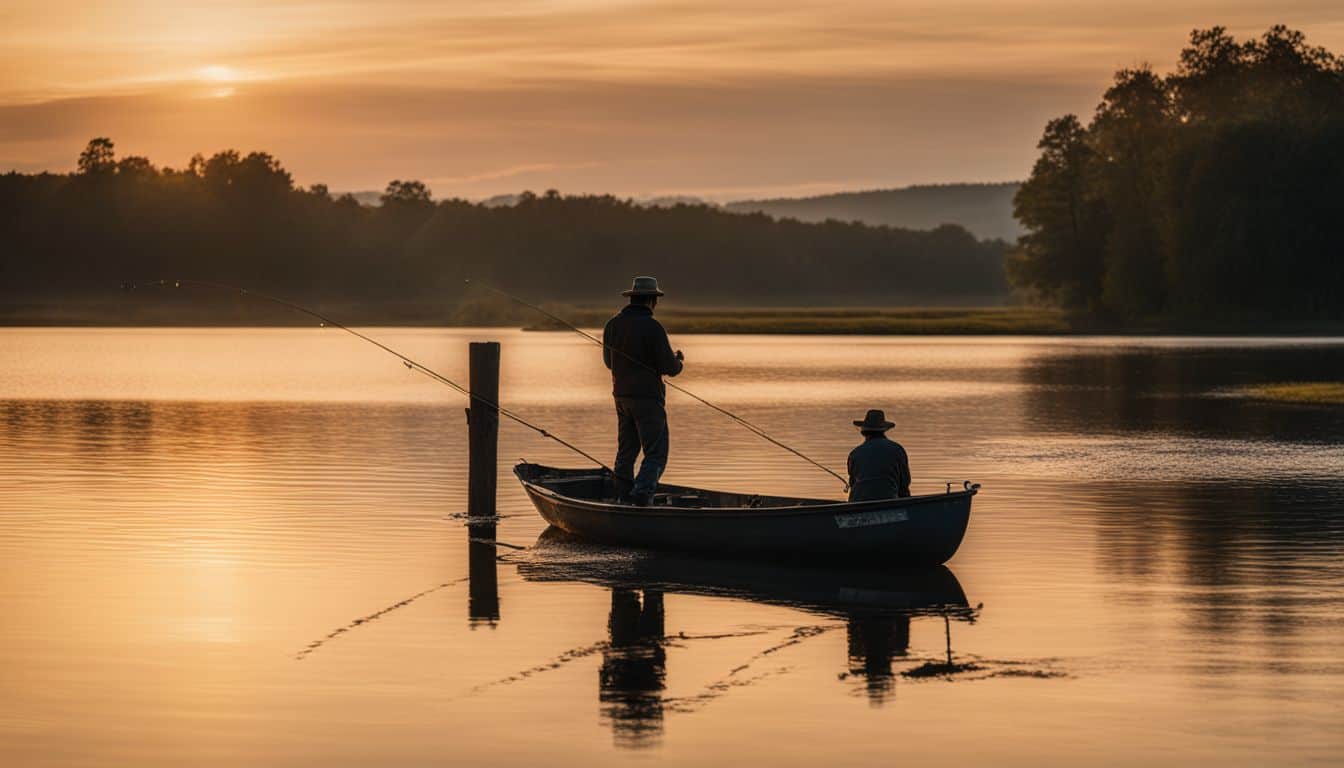
Best Spots for Bass Fishing in Lakes with Heavy Weeds
When fishing in lakes with heavy weeds, it’s important to know the best spots where bass can be found. Look for areas with vegetation such as lily pads, hydrilla, and hyacinth. These types of vegetation can help clear the water and attract bass.
Fishing in areas with more than one type of vegetation increases your chances of finding bass. So keep an eye out for these spots when you’re out on the lake.
In Pennsylvania, there are several locations known for outstanding spring largemouth bass fishing. Horseshoe Pond, Marina Bay, and the lagoons are just a few examples. These spots often have heavy weed growth, making them ideal habitats for bass.
So if you’re in Pennsylvania and looking to catch some bass in lakes with heavy weeds, these are some of the places you should consider checking out.
Comparison and Strategies for Pond and Lake Fishing
When comparing fishing in ponds versus lakes, it is important to adapt your techniques and strategies based on the unique characteristics of each environment. By understanding these differences and making the necessary adjustments, you can increase your chances of success when targeting different species of fish.
Here are some key strategies to consider for both pond and lake fishing.
Differences in Techniques
When it comes to fishing in ponds versus lakes, there are some key differences in techniques. In ponds, you’ll often find fish closer to the shoreline, so walking along the edge and casting parallel to the shore can be effective.
It’s also a good idea to stay low and use smaller baits. On the other hand, when fishing in lakes, it’s important to identify structures where fish might hide, like weeds or docks.
Mixing and matching your setups can also help you adapt to different lake environments. Overall, understanding these differences will help you develop successful strategies for both pond and lake fishing experiences.
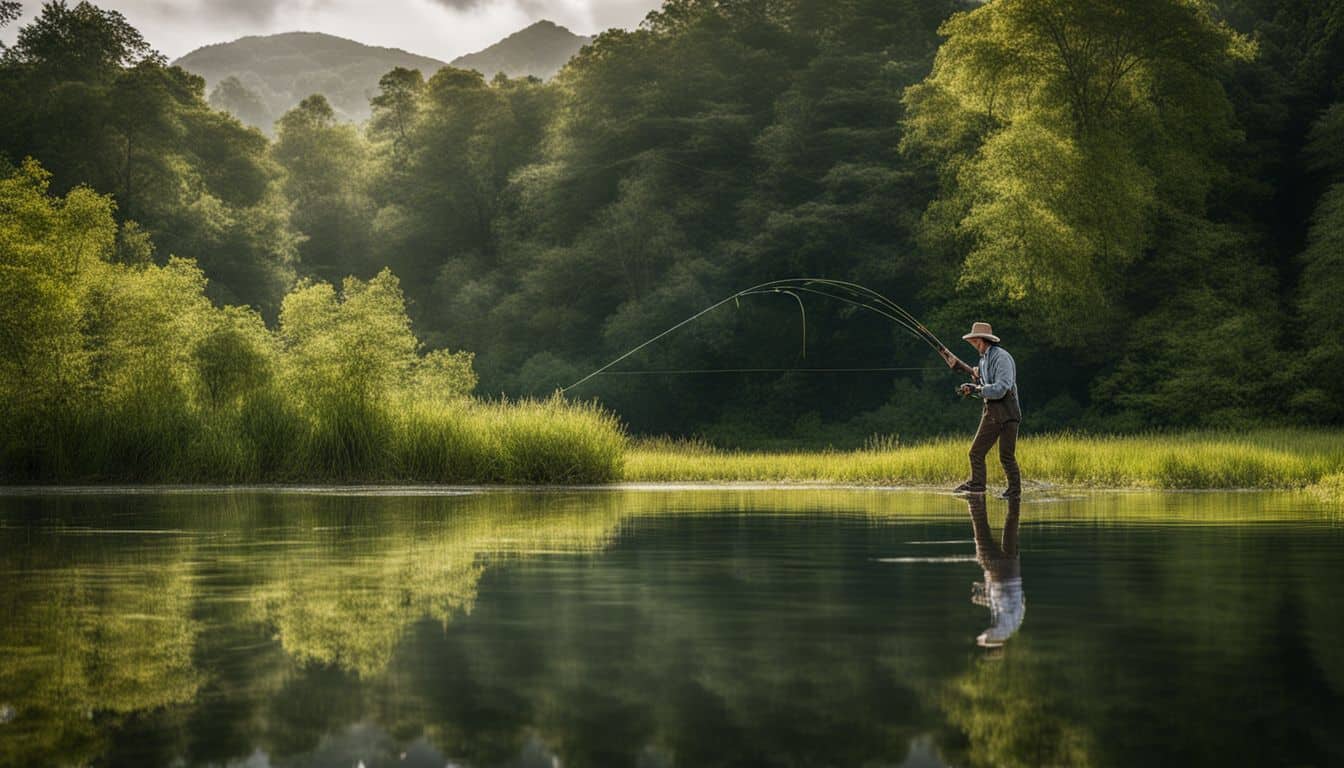
Adapting to Different Environments
When fishing in different environments like ponds and lakes, it’s important to adapt your techniques accordingly. Ponds tend to have a more consistent ecosystem due to their shallower water, which supports plants and algae.
In contrast, lakes offer a wider range of habitats for fish. To adapt, you can focus on targeting different areas such as the edges, points, and holes in lakes, while walking the shoreline or casting parallel to the shore in ponds.
Additionally, understanding lure color choices and utilizing combination setups can increase your chances of success in both environments. So whether you’re fishing in a pond or a lake, adapting your strategies will help you make the most out of each fishing trip.
Ideal Scenarios for Pond Fishing
When it comes to pond fishing, there are a few ideal scenarios that can increase your chances of success. One important factor is the location of the fish. Look for areas with vegetation, fallen trees, or structures where fish like to hide.
Another key consideration is water clarity. Clear water makes it easier to spot fish and choose the right lure. Additionally, pay attention to weather conditions – overcast days can make fish more active.
Finally, using smaller baits and packing light are helpful strategies for pond fishing.
Ideal Scenarios for Lake Fishing
When it comes to lake fishing, there are some ideal scenarios that can increase your chances of success. One important factor is finding fishy structures in the lake, like submerged rocks or fallen trees, where fish tend to gather.
Mixing and matching your fishing setups can also be effective in enticing different types of fish. It’s crucial to understand specific lake fishing tips and techniques for targeting certain species like bass.
And if you’re looking for the best spots for bass fishing in lakes with heavy weeds, focus on areas where vegetation is abundant. By taking advantage of these ideal scenarios and using the right strategies, you’ll have a better chance of catching more fish in lakes.
Common Mistakes to Avoid
There are several common mistakes that anglers often make when fishing in ponds and lakes, including overlooking structure and cover, ignoring weather conditions, using ineffective lures, and fishing at the wrong depth.
Overlooking Structure and Cover
One common mistake to avoid when fishing is overlooking structure and cover. Structures like weeds, rocks, fallen trees, and docks serve as hiding places for fish. These areas also attract plant growth and bait fish, which in turn attract larger fish.
By paying attention to these features, you can enhance your fishing techniques and improve your chances of catching more fish. Remember that successful fishing isn’t just about casting your line randomly; it’s about strategically targeting areas with structure and cover where fish are likely to be hiding.
So next time you’re out on the water, make sure not to overlook the importance of structure and cover in maximizing your fishing success.
Ignoring Weather Conditions
Ignoring weather conditions when fishing is a common mistake that many anglers make. The wind and rainfall can have a big impact on the waters you are fishing in. When it’s windy, the water can become more turbid, making it harder for fish to see your bait.
This means you may need to adjust your tactics and use brighter or noisier lures to attract their attention. On the other hand, when it’s raining, some of the best fishing can happen.
The rain helps to mask your presence and creates ripples on the water surface that fish find enticing. However, it’s important to remember that inconsistent weather conditions should generally be avoided for successful fishing trips.
Using Ineffective Lures
One common mistake to avoid when fishing in ponds or lakes is using ineffective lures. Choosing the wrong bait can greatly impact your success in catching fish. It’s important to understand which lures are most effective for the type of fish you’re targeting and the conditions you’re fishing in.
Additionally, the color of your lure can influence whether or not fish will bite, so it’s crucial to choose colors that mimic their natural prey. By selecting the right lures and bait, you can increase your chances of having a successful fishing experience in ponds or lakes.
Fishing at the Wrong Depth
One common mistake that many anglers make is fishing at the wrong depth. When we fish at the incorrect depth, we can miss out on opportunities to catch fish and end up feeling frustrated.
Spending too much time in ineffective spots is often a result of fishing at the wrong depth. If we’re not catching any fish, it could be because we’re fishing in the wrong areas or using improper techniques, including fishing at an ineffective depth.
So it’s important to pay attention to our fishing depth and adjust accordingly for better chances of success.
Successful Strategies for Catching Bass in Ponds and Lakes
To master the art of catching bass in ponds and lakes, understanding lure color choices, utilizing combination setups, exploring edges and points, as well as targeting vegetation, laydowns, and docks can make all the difference.
Read on for expert tips that will drastically improve your fishing success!
Understanding Lure Color Choices
Lure color is something that many anglers think about when it comes to catching bass in ponds and lakes. However, experts agree that lure color is actually not the most important factor for success.
Instead, factors like fish location and mood are more crucial.
That being said, water color can affect how lures appear to fish. In reddish water, colors may look brighter or lighter, while blues and greens may appear darker. So it’s worth considering the water conditions when choosing lure colors.
In clear water and sunny conditions, light-colored lures tend to work best. They mimic natural prey and are more visible to bass. On the other hand, in murky water or cloudy conditions, dark-colored lures stand out better against the background.
Utilizing Combination Setups
When fishing in ponds and lakes, one effective strategy is to utilize combination setups. This involves mixing and matching different fishing techniques and baits to increase your chances of success.
Whether you’re targeting largemouth bass or other fish species, combining different methods can help attract their attention and trigger a strike. By using a variety of presentations such as topwater lures, jigs, soft plastics, or crankbaits, you can cover different depths and areas of the water column to find where the fish are actively feeding.
It’s important to experiment with different combinations until you find what works best for the specific pond or lake you’re fishing in. So don’t be afraid to try out various setups – it could lead to more bites and ultimately improve your catch rate.
Exploring the Edges, Points, and Holes
When fishing in ponds and lakes, it’s important to explore the edges, points, and holes. These areas are where you can find the best bass fishing opportunities. Here are some reasons why:
- Bass tend to concentrate around these areas because they provide cover and food sources.
- The edges of the pond or lake, where shallow water meets deep water, are prime locations for bass to hang out.
- Points are areas that extend into the water and create a natural funnel for fish. Bass often swim along these points in search of prey.
- Holes, also known as drop – offs or depressions, provide depth changes that bass find attractive. They offer a cooler spot during hot weather and a warmer spot during cold weather.
Targeting Vegetation, Laydowns, and Docks
One effective strategy for catching bass in both ponds and lakes is to target vegetation, laydowns, and docks. Bass often hide and wait for their prey in these areas. Here are some tips to keep in mind when fishing in these spots:
- Vegetation: Look for areas with thick vegetation such as lily pads, grass beds, or weed lines. Bass like to use these areas as cover and ambush points.
- Laydowns: Fallen trees or branches create cover and structure where bass can hide. Cast your bait near or around these laydowns to attract bass.
- Docks: Docks provide shade and shelter for bass. Pitch your bait close to the dock pilings or under the dock where bass may be lurking.
Other Considerations for Fishing Success
Proper equipment and tackle, patience and persistence, observing fish behavior, and adapting techniques to seasonal changes are all crucial factors that can contribute to fishing success in ponds and lakes.
Proper Equipment and Tackle
Having the right equipment and tackle is crucial for a successful fishing experience in both ponds and lakes. Here are some important considerations to keep in mind:
- Use high – quality fishing gear to ensure reliability and durability.
- Invest in a fishing rod that is suitable for catching largemouth bass, such as a long, heavy-action rod.
- Keep your tackle simple by using fixed or slip sinkers, especially when bottom fishing.
- Consider enhancing the fish population in ponds to improve your chances of catching more fish.
- Explore different fishing techniques, such as kayak fishing or fly fishing, using basic equipment.
Patience and Persistence
Patience and persistence are crucial for success in fishing. As an angler, I understand that these qualities are essential in achieving my goals. Persistence is the main characteristic that sets apart a good angler from an average one.
It means not giving up easily, even when faced with challenges or setbacks. Patience, on the other hand, is like a supportive sidekick that helps me stay calm and focused while waiting for the fish to bite.
It’s a virtue that all anglers must possess because fishing requires time and dedication. With experience and regular participation, I have learned that patience and persistence pay off in the end, leading to more successful fishing outings.
Observing Fish Behavior
One important thing to consider when fishing is observing the behavior of the fish. By paying attention to where they are hanging out, you can improve your chances of catching them.
Fish tend to gather near cover and structure, such as rocks or fallen trees, where they feel safe. They also like areas with vegetation where they can find food. So, keep an eye out for these signs and try casting your line in those spots.
Also, notice if the fish are actively feeding or showing any specific patterns in their movements. This information will help you choose the right bait and fishing technique for a successful catch.
Seasonal Changes and Adapting Techniques
Seasonal changes in ponds and lakes can have a big impact on fishing. As the seasons change, so does the amount of sunlight that reaches the water. This affects the temperature and oxygen levels, which in turn affects the behavior of fish.
In warmer months, fish tend to move towards deeper parts of the water where it’s cooler. During colder months, they may move closer to the surface or near structures for warmth. To adapt to these changes, anglers need to adjust their techniques and gear accordingly.
This could mean changing bait depth, using different lures or adjusting retrieval speeds. By understanding how seasonal changes affect fish behavior and adapting our techniques accordingly, we can increase our chances of success on both ponds and lakes.
Conclusion on Fishing In Ponds Vs. Lakes
In conclusion, with these 7 top tips for fishing in ponds vs. lakes success, you’ll be well-equipped to catch more fish and have a great time on your fishing adventures. Whether you prefer the calmness of pond fishing or the excitement of lake fishing, understanding the factors that affect each environment and applying the right techniques will greatly improve your chances of success.
So grab your gear, head to your favorite spot, and get ready to reel in some big catches! Happy fishing!
Resources and Additional Tips for Fishing Success in Ponds and Lakes.
To increase your chances of fishing success in ponds and lakes, there are some additional resources and tips that you can use. First, it’s important to have the right angling techniques for different fish species.
Knowing their behavior and preferences will help you choose the right bait or lure. It’s also crucial to have the proper fishing equipment and tackle for each type of water environment.
You can improve your casting techniques by practicing regularly. Observing fish behavior is another useful resource – this will help you understand where they like to hide and feed.
Additionally, staying up-to-date with fishing regulations and practicing catch-and-release can help preserve fish populations.
Don’t forget about considering the weather conditions before heading out on a fishing trip as it greatly impacts fish activity levels. Finally, understanding the different types of habitat in ponds and lakes will give you an advantage in finding fish hotspots.
Remember, patience pays off when it comes to successful fishing! By using these resources along with the tips mentioned earlier in this blog post, you’ll be well-equipped for a productive day on the water.
FAQs on Fishing In Ponds Vs. Lakes
1. What are the main differences between fishing in ponds and fishing in lakes?
Fishing in ponds is usually easier because they are smaller and shallower, while fishing in lakes requires more skills due to their larger size and deeper waters.
2. What types of fish can I catch in ponds versus lakes?
In ponds, you can often find smaller fish like bluegill or catfish, while lakes offer a wider variety including bass, trout, walleye, and even larger species like muskie or pike.
3. Do I need different equipment for pond fishing compared to lake fishing?
While some basic equipment remains the same (such as rods and reels), fishing in lakes may require heavier tackle and stronger lines due to bigger fish potential. In contrast, lighter tackle may suffice for pond fishing.
4. Are there any specific techniques I should use when fishing in ponds versus lakes?
In ponds, casting near vegetation or structures like fallen trees is effective, while trolling or casting along drop-offs or using depth finders works well for lake fishing.
5. Can I use the same bait for both pond and lake fishing?
Yes, many baits work well for both pond and lake fishing such as worms, minnows, artificial lures (like crankbaits or jigs), but sometimes adjusting sizes might be necessary depending on the targeted fish’s size difference between these two water bodies.


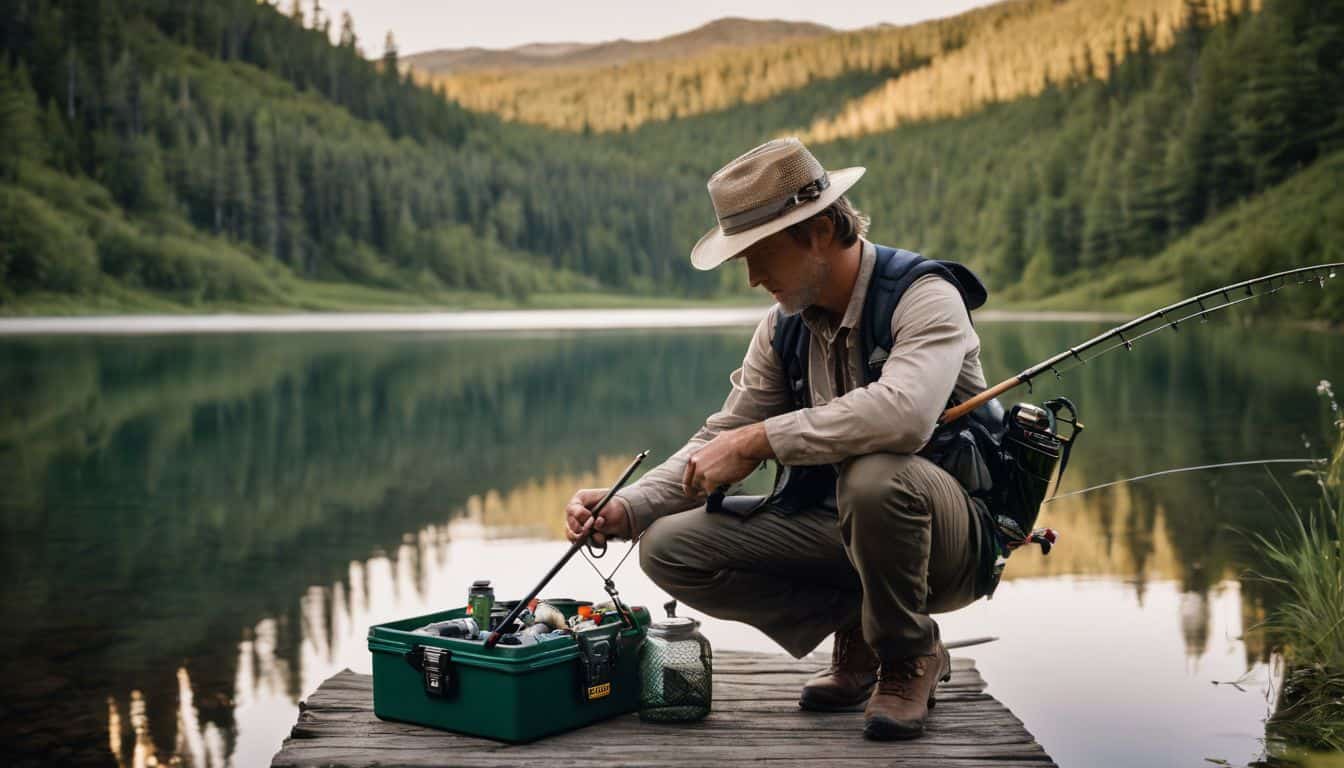
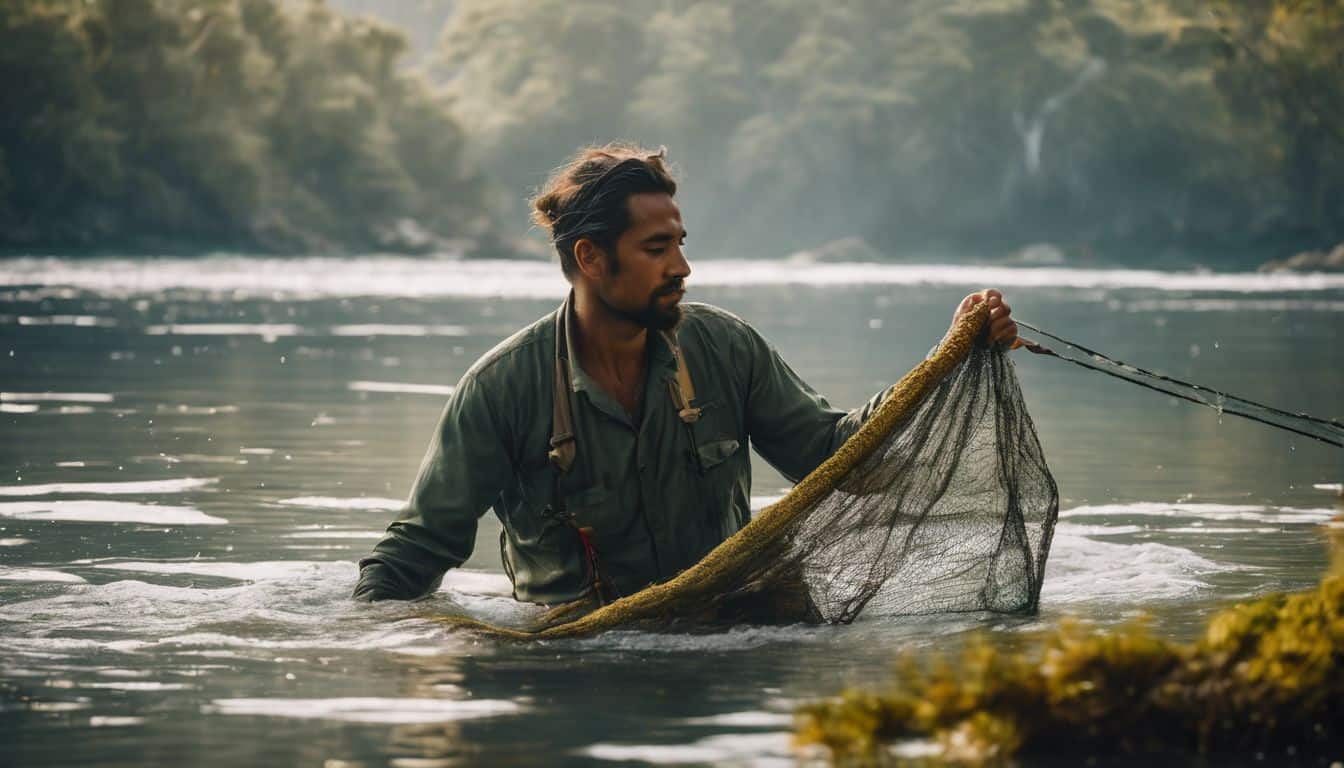
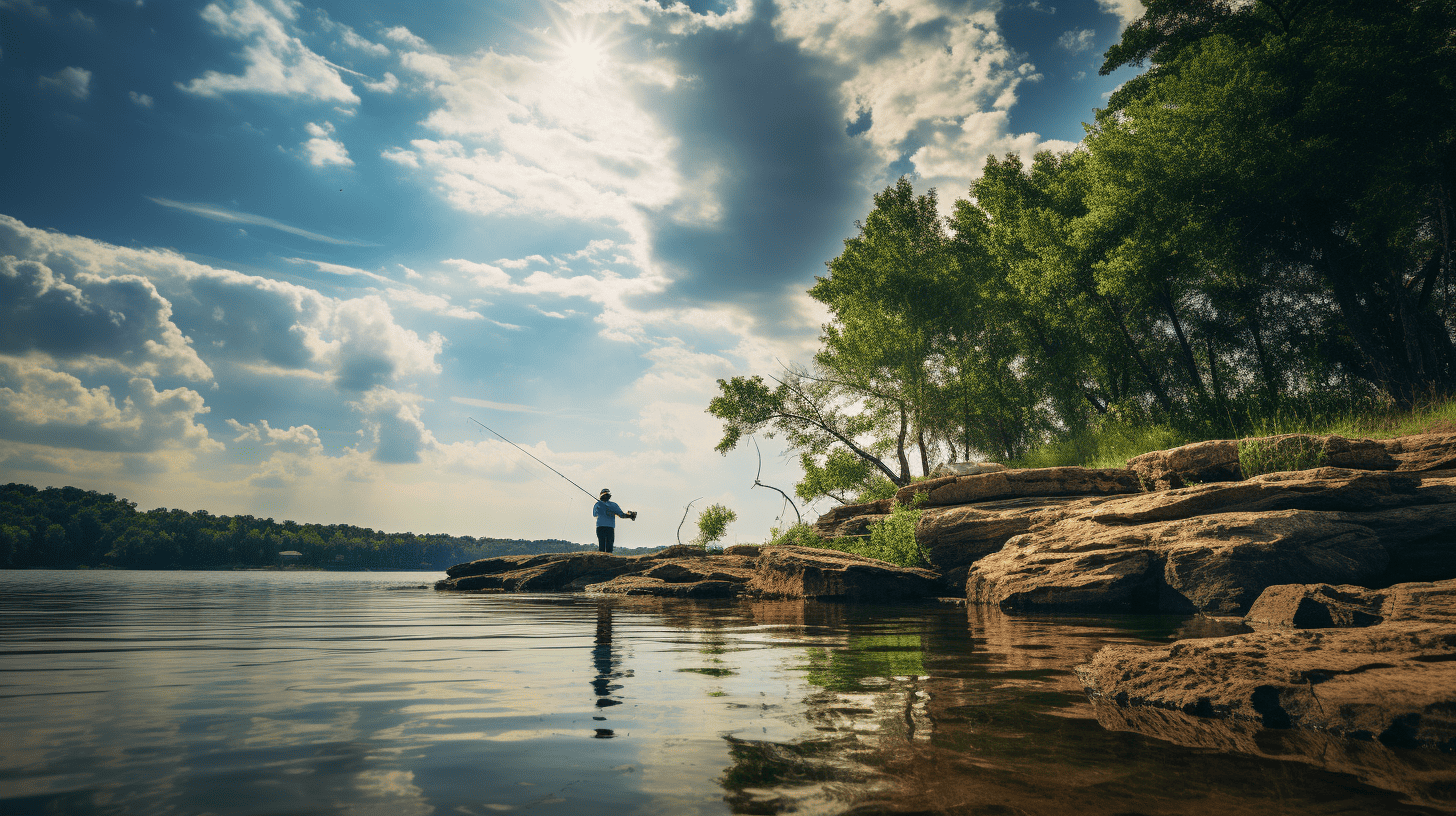
Leave a Reply